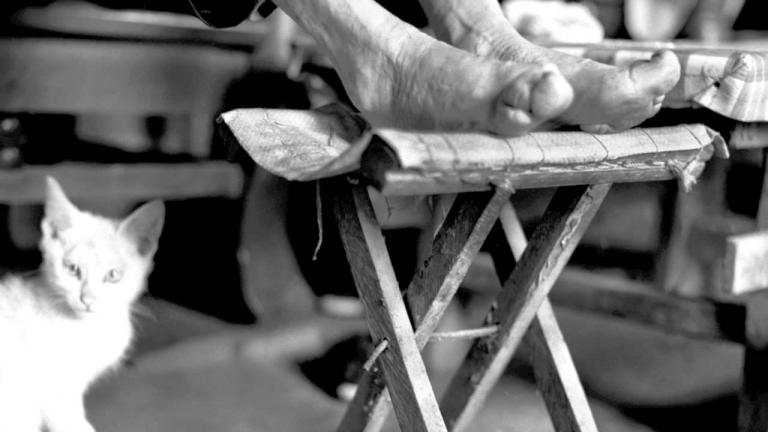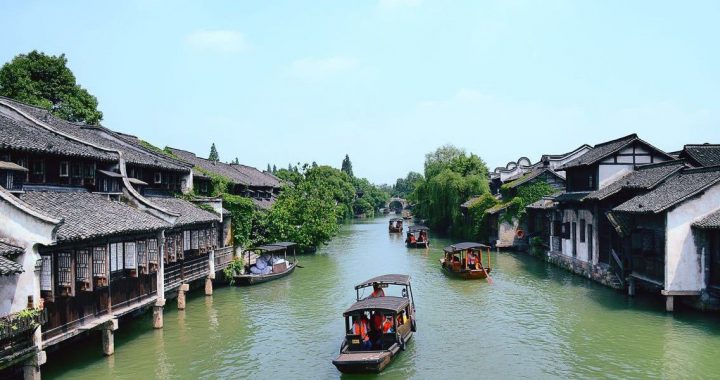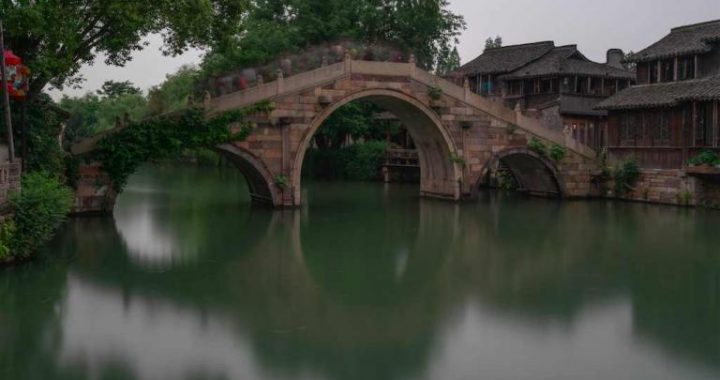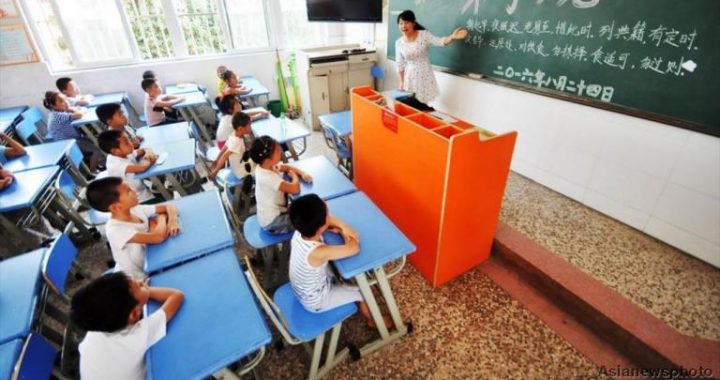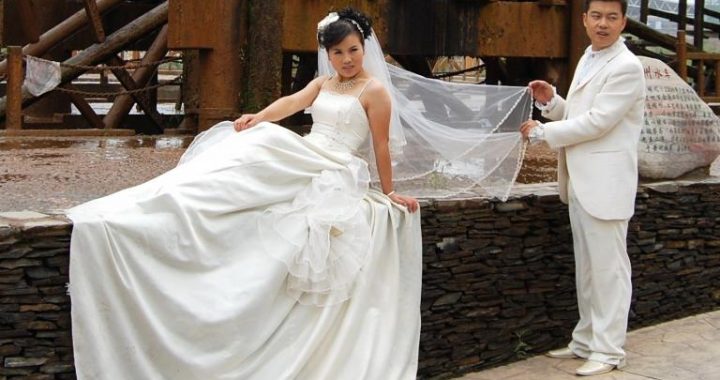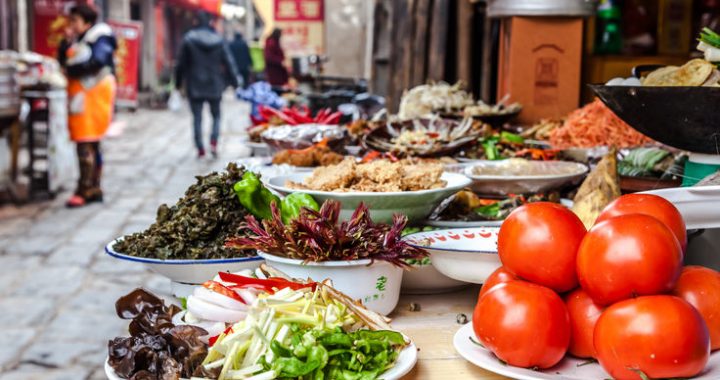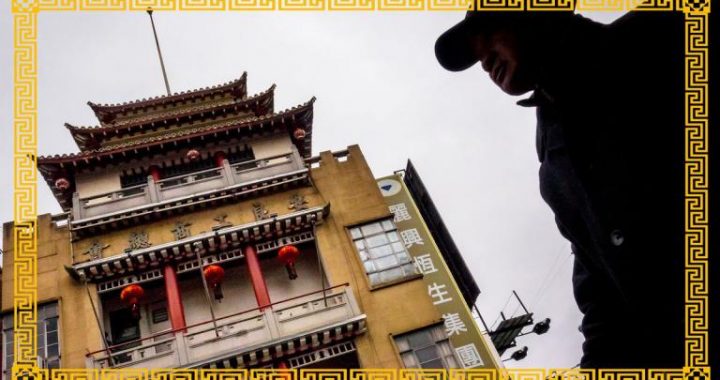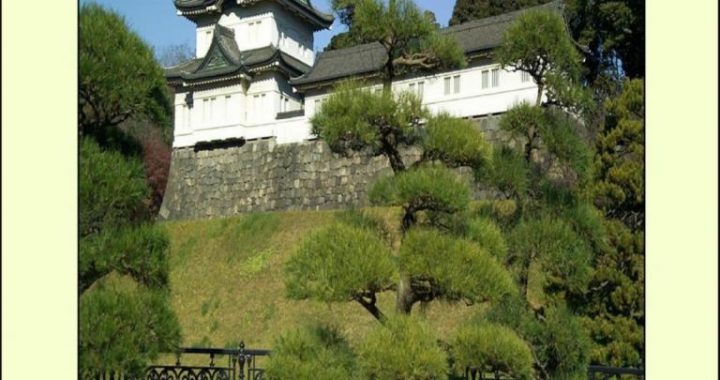The Story of Foot-Binding and the Place of Women in China
27 min readTwenty-first-century Wuzhen does more than offer a glimpse of life in Ian attractive late-Qing-dynasty water town. It also seeks to inform. Its restored physique certainly invites admiration, as does the chance to savour its Jiangnan cuisine and Sanbai Jiu rice wine. Yet Wuzhen educates as well. There are all manner of museums from those of art at the Mu Xin Art Museum, to education at the Zhaoming Academy, to folk customs, wedding, coins, woodcarvings, clothes and cotton dyeing museums. This is quite a collection. There is one more. It is called simply the Museum of Foot-Binding. The study of this ugly practice, so repulsive to modern sensibilities, provides a platform from which to study the place of women in Chinese culture.
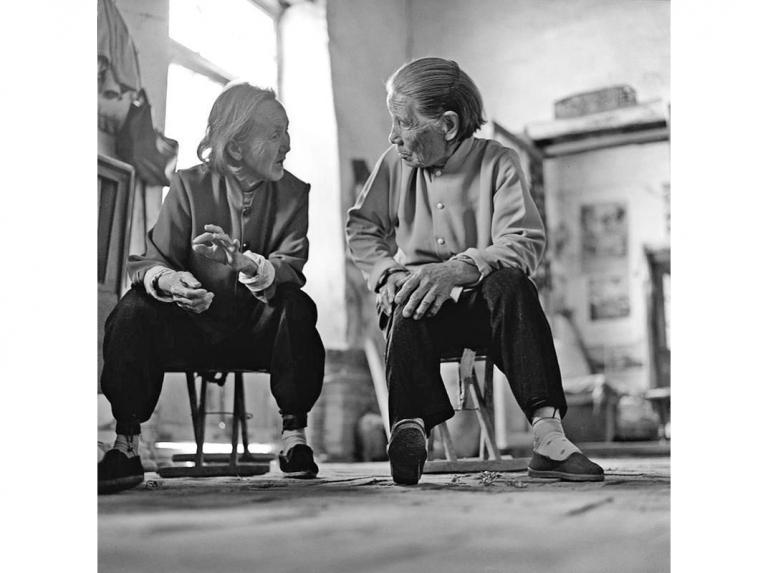
Foot-binding, unique to China, has been controversial since it was introduced in the tenth century between the Tang and Song dynasties. During the Song,a dynasty which generally represents the apogee of Chinese culture, foot-binding became widely practiced. It was then stimulated by the Mongol invasion of 1271. During the Qing almost as a rebuke to their overlords foot-binding became a symbol of the unconquered Han identity. It was used to emphasise the independent culture of the physically conquered but spiritually free Han. They were different to their new barbarian masters and with some twisted thinking foot-binding became one of the symbols through which their independence could be emphasised.
There would initially not have been much foot-binding in Wuzhen, even though it was more likely to have been practised in the cultured south rather than in the wastelands of Mongolia or the northeast. To incapacitate half the workforce required a confidence which comes with surplus wealth. Besides,a mobile nomadic people living in the vast steppes as the Mongols were could hardly survive the crippling of half its people.
The female bound foot gave out a number of signals. One signal was wealth. Since work by the incapacitated female was impossible, her family was assumed to be rich. The majority of the Wuzhen women would have been too poor to indulge in such vanity. Breaking the bones of a young girl’ sfoot, risking infection from the malodorous rotting flesh which prevented herfrom ever working in the rice fields, was indeed only an option for the rich.
The domination by the wealthy of this practice is suggested by many of the photographs of women with bound feet from the late 1800s. The women are usually pictured well-dressed, with immaculate hair, reclining motionless on a chaise longue. Reclining motionless must have been a major pastime. There was little else such a lady could do.
There are several suggestions as to its origins, although even the non-feminist would argue that its origins and long survival had everything to dowith the subjugation of women by men. Nothing else should really matter or be of interest. In practically every society men have long since sought to subjugate women. The symbolism, if not the pain, of a small foot was little differentto a tightly bound lady’s waist in Victorian England. One legend suggeststhe Chinese practice began when a Shang dynasty empress with a club foot demanded that other women shape their feet as hers. Another puts forward the legend that a tenth-century court dancer once bound her feet in the shape of a moon. She so entranced the emperor that the practice was widely adopted. This latter story refers to the reign during the Southern Tang state(which would be eventually annexed by the Song dynasty) of Li Yu, based in Nanjing, not far from Wuzhen. However, many Wuzhen burghers imposed the practice on their young girls; all the people of the town would have known it was practised at the nearby imperial court.
Today it is still possible to meet some Chinese who could talk of their grandmothers bound feet. Indeed, the foot-binding practice, known as chanzu in pinyin, permeated Chinese society through to the early of the twentieth century. There is for example a biography of the famous romantic poet XuZhimo who died in 1931 written by his granddaughter. Xu’s family had the haute bourgeoisie background where foot-binding was common. The book addresses the clash between cultures of East and West which governed the poet’s short life. To entitle the book she searched for an analogy which would describe the cultural chasm between the East and the West in the 1920s. She found it in foot-binding. The book title became Bound Feet and Western Dres, which described with laser beam accuracy the cultural contradictions in early twentieth-century Chinese life as China sought to embrace parts of Western culture without quite discarding its Asian core.
Although the practice probably started amongst the courtesans at Li Yu’s court, it spread to the less wealthy. Families realised that imposing this practice on their young girls increased their chances of an advantageous marriage.
The practice was thus adopted by the socially ambitious. No matter that the uncivilised’ Manchu nobility from the far north tried to ban the practice, or that it was banned after the Xinhai Revolution of 1911 destroyed imperial China. The Communists still found it necessary to issue a ban in 1950 after assuming power the year before. The strength of the foot-binding fashion was such that William Rossi in his book The Sex Life of the Foot and Shoe (1993) estimates that fifty per cent of all Chinese women in the nineteenth century, and one hundred per cent of upper class women, had bound feet. Foot-binding was no aberrant practice followed by courtesans at the imperial court; the ritual was deeply carved into Chinese culture.
Undoubtedly there would have been bound feet in Wuzhen in good times.
Perhaps Yan Chen, an official in the late 1800s who started the town’s Lizhi Academy, inflicted the fashion on his family. Maybe his sister who built the famous Lotus Garden in wealthy Suzhou tottered round the garden on bound lotus feet’, as they were called. In the 1920s perhaps the rich Xudong family from Wuzhen who moved to Shanghai where there is now a road called Wuzhen Road also imposed the practice. The problem in establishing its prevalence in Wuzhen is that no one would have considered it sufficiently remarkable to comment upon. It is safe to assume that for over the four hundred years leading from the Song up to 1949 the custom of binding feet would often have been inflicted on girls by Wuzhen families with sufficient wealth.
The details of this excruciating process are too well known, or at least accessible where there is an interest, to bear repetition. The most desirable size of distorted foot was three inches, for which the accolade of the Golden Lotus’, or jinlian in Chinese, was given as a name. For those not confronted by the reality of a pair of Golden Lotus shoes in the museum, it is worth pausing to measure between thumb and forefinger how life must have been for a Chinese lady with three-inch-long feet.A four-inch foot was referred to a Silver Lotus.
These are also on display in the Wuzhen museum. Beyond five inches, the girls were saddled with the term’ Iron Lotus,a most undesirable lengthy appendagewhich was considered oversized. In Buddhist belief the lotus flower has two associations. The first is faithfulness, which was used in the context of marriage and possibly explains the terms application to bound feet. The second was enlightenment. Whilst Kublai Khan was establishing the Yuan dynasty in the thirteenth century, he wisely sought out philosophers of all faiths. His advisory group was referred to as the Golden Lotus.
The mutilating process started when a girl was possibly as young as four years old. Only the big toe was left in service; the rest were destroyed. In many periods the marriage expectations of the Iron Lotus girl were much reduced.
After marriage, some husbands would drink from the Lotus Shoe, confirming the idea that food, drink and sex are not really that far apart. The Golden Lotus became an eroticised fetish with almost a spiritual dimension.
Neither the wish for a national identity distinct from that of the Mongols, nor the copying of a deformed empress’s foot, nor even the emulation of an imperial courtesan with naturally tiny feet were ever the real cause of this practice surviving. Its survival came through the male view that since lotus feet had an erotic appeal the practice should be imposed on women. Qing dynasty sexual manuals displayed forty-eight different ways to play with a woman’s bound feet. They were often considered the most erotic part of a woman’s body and even less likely to be revealed in a painting than were female genitalia. The English did not match this barbarous practice but it is interesting to note that in nineteenth-century Victorian England the sight of an innocent female ankle was considered erotic.
There was some conjectural medical research in 2007, which is difficult for the layman to absorb, suggesting that the love-making skills of a Golden Lotus girl were improved through cross-activation of somatosensory and motor cortices within the body. These abused women, some thought, made better lovers. Reflexologists would probably not need the scientific explanation to accede to such a view.
Women with lotus feet tottered and swayed when walking, ironically not unlike the manner of twenty-first-century women in high heels. Both highheels and bound feet push the body forward in the same manner. Feminists observe that the lotus shoe and high-heeled shoe each have an exaggerated pointed phallic finish.A bizarre and often distorted sense of beauty seems a constant in human life across many societies. Wuzhen’s Foot-Binding Museum has numerous sets of tiny shoes, more suited to a doll’s house than to a human being. The heels, typically a couple of inches high, extend the length of the sole and are parallel to the entire sole rather than raised above the heel as with the modern high-heeled shoe.
One truth about the dreadful practice is revealed in the Wuzhen museum where there are models of humans, four or five of them, around the young girlwhose feet are being tortured. They are all women. This pain was perpetuated, experienced and inflicted by women on women. The abuse of one segment of human society is often aided by those who themselves are part of the same tortured segment. The less powerful sometimes implement the demands of the more powerful even when it is against their interests. The Jewishcapo’ as a prisoner-functionary in the German concentration camps during the SecondWorld War, those Africans who cooperated eagerly with Europeans in the West African slave trade are but two other illustrations. There are many more such examples which in part excuse the women of China who imposed the practice on other Chinese females.
The Wuzhen museum displays 825 pairs of minuscule shoes. It has pictures of those who have suffered, shows the mechanics of breaking the bones of the foot and bending a girl’s toes, and describes on wall charts some of the history. It writes about ‘a glimpse back into history’, without perhaps sufficient emphasis on how recent a practice it was and how there are still some old people alive in China who suffered in this way. In 1987,a research revealed that thirty-eight per cent of Beijing women aged over eighty had malformities relating to bound feet. This is not quite yet ‘ glimpsing into history’ as the museum would have the visitor believe.
Whether deformed feet signalled class status, made women more beautiful, led to better sex, assisted a girl to marry well or even was a means for mothers to ensure their daughters learnt domestic skills while trapped at home, does not matter so much. What matters is that this practice is just a further example of gender-based violence against women in a world where it was and remains prevalent. Chinese society in that respect was neither so different, nor so much worse, than many others. It was simply more organised and, typical of Chinese culture, filled with ritual. There is still a sense of shame felt in modern China about foot-binding. In this sense Wuzhen’s creation of a foot-binding museum, one of the only two in China(the other one is in Sichuan province), is brave and worthwhile. There are a few other museums which touch on the subject. For example Shanghai has a museum with a section displaying lotus shoes.
However, they are shown more as art exhibits, and some indeed are gorgeously designed silk-woven tiny shoes, rather than as an attempt to reveal the social context of foot-binding.
There is of course politics behind the focus of museums in every country.
Foot-binding was a major part of Chinese culture and in fact there deserves to be more museums about it in a country the size of China. Such shameful practices need to be given air or else the truth behind the oldest of maxims, that those who cannot learn from history are doomed to repeat it, will be borne out.
This is obviously not to suggest foot-binding will be reintroduced, but some other equivalent abuse of women might yet flourish.
Museums dedicated to the errors of a country take time to be established.
England has a museum in Liverpool dedicated to the evil slave trade from which so many English people prospered. It took until almost two hundred years after the slave trade ended for England to open its slave museum, and even then the museum adopts the title of ‘ International’, rather than English Slave Museum’.
The museum identifies Liverpool with this trade. However, it was not the great west-coast English cities of Glasgow, Liverpool and Bristol alone that profited from this evil trade. The riches from slavery reached everywhere into British society, even as it happens to have funded the outstanding Fitzwilliam Museum of Cambridge University in the mid-1800s. There remains some politics behind the twentieth-century Museum of Slavery.
Perhaps England should also have a museum about the Opium War, sponsored by the still very wealthy trading company Jardine and Matheson. This company grew rich though the opium trade and still prospers. The company’s eponymous founders, who were both in fact Scottish rather than English, developed the foul trade. There is at least an Opium War Museum in Dongguan, Guangdong province where the shocking behaviour of the nineteenth-century British is rightly exposed. In Beijing there is a museum exposing the atrocities of the Japanese during their invasions of the country.
No country’s cultural memory should be deprived of the chance to display its errors or periods of evil behaviour. The Chinese who are presently deeplysaddened and embarrassed by the practice of foot-binding need to be reminded that women have been, and still are in many places, abused. The Wuzhen museum is not there to stimulate shame, but rather knowledge. Other societies have behaved badly at times. Yet the sense is left that the Chinese are still a little quicker to record the injuries inflicted by others upon China rather than to face those inflicted by themselves. As regards foot-binding, Wuzhen has led the wayin China in providing a chance to learn about this abuse. It deserves credit.
Alongside the ancient part of Wuzhen in which most visitors gather, the Wuzhen of cobbled alleyways, ancient bridges and small lodgings, is Wu Village. The contrast, one of significance in China, is made between the town’ of Wuzhen and the countryside around Wu Village. Wucun or Wu Village is a museumen plein air’. Parents from the high-rise living blocks of Shanghai orHangzhou can remind their children of where their beloved hamburgers derive by looking at a variety of domesticated animals. Likewise several crops are grown on a modest scale, and then sold at a local shop. There are also several lodges for rent furnished to a very high standard.
The decor of these villas, well executed as it is, presents an idealised view of the period. The Zhiging Shidai guesthouse, which could be translated as the Youth Sent Down [ to the country] Guesthouse’, is full of happy-looking workers together with 1960s-styled radios and white-enamelled metal mugs in the rooms. Visitors are supposed to experience another aspect of the past here. It is well done, but it is romanticised with little connection to the harsh reality of those times. The warm feelings of nostalgia these villas seek to establish are not often encountered among twenty-first century Chinese people. Wuzhen’s Foot-Binding Museum represents a braver attempt to portray the past. Mao Zedongconsidered the Wuzhen writer Mao Dun as amongst his favourite authors. Mao Dun wrote about the countryside as well as the people of Wuzhen. Ironically it might just be that Mao Zedong idealisation of the countryside was in part shaped by one of Wuzhen’s most famous sons.
Some of the other Wuzhen museums cover aspects of Chinese life which are either exclusive to this community or ones in which this region of Zhejiang has played leading parts, such as silk production. One example of the former is its unique means of dying cotton at the Hong Yuan Tai Dye House. The process, known as lan yin bua, of dyeing cloth with classic indigo designs was developed during the Song dynasty. The indigo is made from a local herb, the Eupatoriumfortunei,a cultivated plant looking and smelling like lavender. The plant is also used both to stimulate an appetite and to make fragrant oils. The blue printed cloth it helps create is a classic Chinese product, whose manufacturing technique came originally from Mongolia. Seven hundred years’ production in Wuzhen has given the product some local credibility.
The cloth was used locally to wrap a bride’s dowry. It was printed with Buddhist symbols expressing the hope for children.A new born child would first be wrapped in the cloth printed with patterns inducing heavenly protection for the child. After birth, eggs wrapped in the cloth, were given to the extended family symbolising an invitation to visit the family and child. These customs have stopped. Without such a museum they would have moved into a deeper category of forgotten traditions. Wuzhen’s wide choice of cultural museums such as those of coins, marriage furniture and foot binding provide the chance to take a wide historic view of Chinese society.
The link between another museum, the Coin Museum, and Wuzhen is simply that a local man, Yu Liuliang, was an ambitious collector of coins. As a Technical School teacher he developed his collection as a means of encouraging his students to understand metal casting. The oldest coin in the collection dates from the Shang dynasty in the sixteenth century BC. The hot-metal casting skills in China, which led directly to the kiln skills required to make porcelain at very high temperatures and cooking utensils, were absolutely outstanding. They were far superior to those of the West. Such skills were applied to making coins.
All but the dullest minds amongst the students must have been inspired by Yu Liuliang’s lessons.
The earliest coins in China were shaped like cowrie shells and indeed such shells, and for many centuries later in Pacific islands like the Trobriands, actually served as coins. Cowrie shells link Europe to China in another way. Chinese porcelain was first imported into Europe through Venice in large quantities during the 1600s. Searching to name this Eastern marvel, the Venetians chose the word porcellana, their name until then for the cowrie shell. The shell and porcelain share the same lustrous, almost translucent, qualities.A word very similar to porcellana was subsequently created in every other European language.
The earliest metal coins in China date from the Spring and Autumn Period, circa 750 BC. They were shaped like different types of spade or knife, both essentially representing the agricultural implements which were at the centre of their lives. Round coins followed circa 350 BC into which a square central role was later introduced. This symbolism in a coin of a circle indicating the Heavens and a square the Middle Kingdom directly below the Heavens is well known in China. One leading university in Tianjin has recently constructed its main building using this circle and square concept. In architecture this term is referred to as Mingtang where the outer circle is divine and the inner square represents the earthly temple. The Tianjin undergraduates prefer the allusion to a lavatory seat rather than an earthly temple. The same shape was used inancient Chinese mirrors and indeed served to give the 2008 Olympic medals aChinese tweak. With holes, coins could be held in the form of a necklace on a single rope or strap.A hole in a coin was cut in many Western countries, though not England. Although sometimes serving as a means to devalue silver content, holes were also a practical means of carrying money. The hole has prompted colloquial phrases. In China the phrase Zuan Qianyan Li translates as someone climbing into the hole of a coin and who could therefore be considered obsessed with money. In England, despite not making holes in coins, the phrase strapped for cash’ signifies a lack of money. Chinese coins ceased to have holes after the 1911revolution.
Unsurprisingly given their mastery of the skill, Chinese cast their coins, whereas Western coins were traditionally cut and hammered. Thus teacher Yu Liuliang could use the coins, now donated to the museum, to reflect the development of Chinese casting and engraving skills. The extent of coin usage in ancient China, as of much else of China when it comes to measuring, astonishes; two millennia ago the Western Han issued 220 million coins each year.
The museum also displays paper money. The most remarkable aspect of such a form of currency is that the Chinese developed a silver-backed papercurrency during the Tang dynasty around 600. This was helped by the mulberry tree which was already so assiduously cultivated in Wuzhen for the leaves the silkworm gorged upon. The under bark of mulberry trees produced a solidifiedslurry which made good light paper as well as bank notes. Paper itself dated back two millennia but in the fourth century this tree’s bark was used to improve paper quality. Such advances in paper manufacture, combined with China’s greater familiarity with the concept of credit, eased the introduction of paper money. It took until 1666, some 1,000 years later, for the first country in Europe to introduce a paper currency. The innovative country was Sweden; however, the ‘ Stockholms Banko’ went bankrupt after eighteen months and its manager was gaoled for fraud. Coins are one of mankind’s most ancientand informative forms of art. They have been an immensely valuable source of historical and cultural knowledge although their contribution is nearly over. China is again ahead of the West as it has moved towards the coin-less society even more rapidly than Western societies. Their dominant social media application, WeChat,a cleverer version of Whatsapp, is used by 800 million Chinese to complete cashless transactions. Coins and paper money play a smaller role now in China than in Europe.
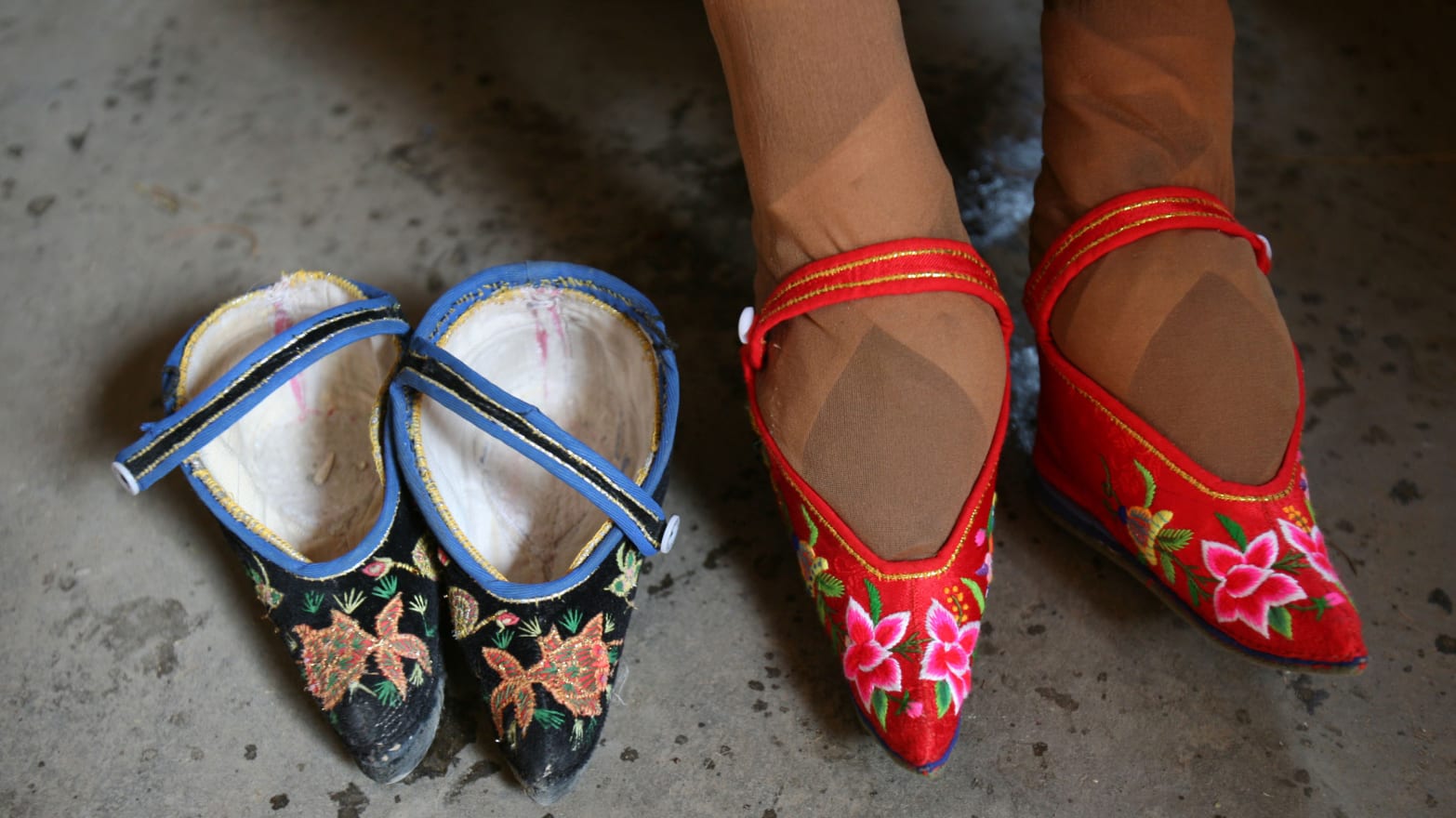
Both bank note and coin are threatened. In product lifecycle terms the bank note obviously has a shorter history than the coin and its lack of durability compared to the solid coin makes it of less use to the historian. Explaining to younger people, as the Coin Museum does, that a paper currency requires careful governance must be a good thing. Bank notes have always created more problems than coins. Indeed in Cambridge the sterling bank notes used by visiting Chinese cause unease, welcome as the Chinese guests themselves are. As the Englishman in Cambridge anytime before 1700 would have been puzzled by a Chinese visitor offering a paper banknote, so such looks of puzzlement are still exchanged between Cambridge man and Chinese visitor into the twenty-first century.
Accustomed now to believing that the Chinese are the people of new wealth, the shopkeepers of Cambridge are no longer surprised by the fact that all the Chinese use fifty-pound notes to make any purchase however small.
Even children, often dangerously unaware as to the high value of the note they proffer to the shopkeeper, use them. The highest detonation note in China is 100 Yuan, slightly under £10, so the very idea of a note with a value over five times higher may be difficult for a child to comprehend. The English adult, or at least those not engaged in some nefarious business, hardly even handle such high denomination notes. Their children certainly never possess them. The notes in the hands of these visiting Chinese just confirm to the shopkeeper the same view that their forebears had of a country which produced silk, tea and porcelain hundreds of years earlier. The Chinese are simply a rich people as even their children wave £50 notes around. The knowledge that Chinese banks only issue sterling in multiples of £50 notes to those travelling abroad has not yet reached many Cambridge shopkeepers.
Wuzhen’s museums add a worthwhile dimension for the visitor to the old water town. Above them all the Foot-Binding Museum is particularly fascinating because it opens up the issues of women in Chinese society. There have naturally been many famous female cultural icons in China’s past. The usual examples quoted are the politician Shangguan Wan’ er,a concubine who became a leading politician. She was though eventually executed in 710, just after the reign of a famous Empress, Wu Zetian. Another lady known as Liang Hongyu in the time of the Song was renowned for her military skil. Her army commander father did not have her feet bound and instead taught her martial arts. She became a great general and died in battle in 1135. There was also Empress Cixi in the late nineteenth century, about whom the English scholar Julia Lovell wrote so informatively in The Last Empress in 2014. These were powerful role models.
There were role models in the arts as well. In the late Ming period during the 1600s, Four Books for Women, Ni Sishu, written by four women were published. These books written independently by four women were published together. They must have inspired political women like Cixi. The book by Lady Liu relates inspiring tales about all manner of women. Scholarship and sacrifice for both family and country are extolled. In another by Ban Zhao, apparently the most read, women are taught the importance of obedience and submission in the bluntly named Admonitions for Women. This reflected the ‘ Three Obediences and Four Virtues’ which featured so strongly in the Confucian Book of Etiguette and Ceremonial and the Rites of Zhou. The other two books by these ladies are Womens Analects and Sketcb of a Model for Women. None of them would appear likely to be approved reading for a modern feminist. Ban Zhao’s book suggests reverent submission to a man, suggesting that ‘a husband should be set on a par with Heaven’. Yet the books did argue in favour of women’s education and indeed were written by four obviously accomplished women.
Ban Zhao, who died in 117, is probably China’s most revered female scholar, though how much that is on account of combining her sex with scholarship is unclear. She writes of how women should focus on virtue, their speech, comportment and hand work. Her writing would have reinforced Confucian thought amongst its readership, essentially young aristocratic women. Avoiding scandal in youth and behaving according to the precepts laidout provides the best chance of becoming an influential dowager. Power could be acquired by females, but it takes a long time. These books with this approach to women and their potential dominated female consciousness much more than did the alternative famous female icons General Liang or Empress Wu.
Amongst the best-known female poets, subjects of sorrow and devotion were often chosen. Inaction or reaction, and rarely proaction to events, was the norm. Such an approach is not so different to that of the West. Cai Wenji from the time of the Eastern Han around 20 was a poet and musician. The daughter of a scholar, she was captured by northern invaders, then ransomed and finally her husband would have been executed without her intervention.A strong intelligent woman certainly, but usually one who could only react to events, never shape them. Her beautiful ‘ Poem of Sorrow and Anger’ speaks clearly across 2,000 years of the pain of exile.
Poem of Sorrow and Anger
My dwelling is often covered by frost and snou The foreign winds bring again spring and summer; They gently blow into my robes,
And chillingly sbrill into my ear;
Emotions stired, I think of my parents,
Whilkt I draw a long sigh of endless sorrous.
Whenever guests visit from afa,
I would ofien make joy of their tidings;
I lost no time in throwing eager questions,
Only to find that the guests were not from my home toiwn.
The female poet, usually quoted as the most famous, Li Qingzhao was mentioned earlier.A blissfully happy life in Shandong was turned upside down by the collapse of the Northern Song dynasty. She moved to Hangzhou where she died in 1151. Buffeted by misfortune, able only to react to life and not to shape her destiny, she wrote wonderfully constructed poems which read so well 1,000 years later, even in a foreign language.
Song Lyric No 43
I’ ve beard spring is still lovely at Tiuwin Streams.
I’d like to go boating in a light skif there, But fear the tiny grasshopper boats they bave Would not carry sucb a quantitny of my sorrou.
Although the arts were dominated by men, it was clearly possible for some female literati to achieve fame in a manner which did not happen until centurieslater in the West. Nonetheless, critical appreciation of their work was influenced by their sex. Indeed, Ronald Egan argues in The Burden of Female Talent (2014) that appreciation of Li Qingzhao’s work has been distorted by making her work fit Confucian-based preconceptions of women. Her role as a wife, in turn devoted, lonely and widowed, should not interfere with understanding her poetry. The short extract below resonates so much even 1,000 years after it was written— privileged young women competing over their clothes and then acknowledgment of lost youth, hair unkempt with greying frost’ temples, age causing disconnection with youth, the power and pleasures of memory.
Timeless, and beautifully written.
A Friend sends her perfumed carriage
I remember the bappy days in the lost capital.
We took our ease in the woman’s quarters.
The Feast of Lanterns was elaborately celebrated-
Folded pendants, emerald bairpins, brocaded girdles, New sashes — we competed
To see who was most smartly dresed.
Now I am withering auwa.
Wind-blouwn bairs frost temples.
I prefer to stay beyond the curtains,
And listen to talk and laughter
I can no longer share.
Reference to the lost capital’ in the first line, such a frequent occurrence in Chinais story, is to her life of ease under the Song in Kaifeng. Fleeing from the Jurchen Jin armies to Hangzhou and the area of Wuzhen caused the suffering she eloquently expresses in this poem.
Li Qingzhao was fortunate to be born into a scholarly aristocratic familywith a father who wished to educate his daughters. It was the sort of luck Margaret Roper, daughter of Thomas More, the chancellor and later victim of the blood-thirsty Henry VIII in the 1530s, had enjoyed. Luck was indeedneeded by these women as the odds against achieving worldly success were heavy. Other names of great female poets in China can easily be found, such as Xue Tao in the ninth century or Zhu Shuzhen during the Song. There were very few women who emerged as English intellectuals in any artistic discipline from these centuries to match those of China. Mary Sidney, Countess of Pembroke, died 1621, poet and savant, was possibly the first. International lists of female poets from earlier centuries are dominated by the Chinese.
Much of the background to the subjugation of women in China derivesfrom Confucian theory. Chastity, obedience, modesty diligence were the virtues a woman should offer her man.A woman must be a virtuous virgin until marriage and then, when needs be,a chaste widow. Again let it not be imagined that Chinese society was more misogynist than many others. At Jesus College, Cambridge there is beautiful late-nineteenth-century stained glass window by Burne-Jones. The pre-Raphaelite artist displays three sexuallycharged young women above a male-inspired wish list of female characteristics which would have won support from Confucius. The women, elegantly dressed and curvaceous, stand above three legends which read: Patience, Obedience and Docility. An English husband can but live in, probably vain, hope.
Women, even those with feet unbound, had to fight for every slither of liberty and scintilla of freedom. Their position was not that dissimilar to women in Europe. Nonetheless, the English colonial secretary recorded in1899his amazement on an expedition inland beginning in Wo Hang in north Hong Kong that of the one hundred and eleven people as carriers seventy were women. While the women worked, the men, he recorded,’ hung around, fished a little and played with the children’. The modern woman everywhere might of course merely murmur that nothing much changes.
Women were also denied access to the meritocratic society which in Chinasbest times worked so well both for the country and for capable men. Women, forbidden to sit for the exams, could not enter the bureaucracy. To join the literati was a little easier; it required in China, as it did in Western Europe,a liberal and of course wealthy father to become a woman of letters. Matters were not so different in England. Women could not acquire a university educationuntil the 1870s. In consequence the professions of law, medicine, accountancy and in effect the civil service, were denied to them. Cambridge University did not permit women to have full membership until 1948. England’s first female doctor, Garrett Anderson(died 1917) had to qualify in France in order to practise. As it happened her younger sister, Millicent Fawcett, was an eminent academic who started a college for women at Cambridge in the 1870s. China put less such overt restrictions in the way of its womenfolk but many had bound feet. Tan Yunxian in the mid-1550s had great success as a medic. The learning of medical skills for women was usually done through family, but once trainingwas complete and a reputation established, their career was only restricted by absence of talent.
There are many agonising tales in literature and real memories for women themselves of the poor treatment received at the hands of a husband’s mother.
Much changed after 1949. Mao attacked every sort of social convention. Men and women wore the same clothes, had access to the same books, ate the same food and completed similar work. The feudal patriarchy was disarmed. It was aprocess, taking 200 years in the West and still on-going, which Mao attemptedto complete in twenty years. Many of course in both countries would argue it remains work in progress.
Mao had been helped by female revolutionaries. One of them, Qiu Jin, was born near Wuzhen in Shaoxing. She became a Triad member as a means of overthrowing the Qing in the late 1800s and was given responsibility for Zhejiang province. It would be intriguing to know if Wuzhen was fertile groundfor coaxing out revolutionary supporters. It is more likely that the cities of Hangzhou and Shanghai were breeding grounds for those seeking to secure sexual equality.
Qiu’s home, where she wrote on women’s rights and edited the Communist journal Baibua Bao or Vernacular Newspaper, is now a museum. She spoke out against foot-binding. The wax model of her in Shaoxing portrays a powerful, austere woman. Photographs of her youthful self reveal an attractive and intelligent face. In 1907 she became head of the Datong School in Shaoxing which did a modest amount of sports training and a greater amount of military training for revolutionaries. She was executed in 1907 by the imperial Qing government just four years before its collapse.
Twenty-first-century Chinese woman would appear to live in an easier world than her forebears. The female as victim needing to manipulate men to secure influence or to be meek until older age so that the powers of a dowagercan be secured is certainly not the modern template. At universities, publishing houses or in small companies women seem to occupy many more senior positions than their peers in the West. Yet in the most powerful positions men still appear to dominate. Where women do break through in numbers above the average it is remarked upon. In Hong Kong where eight of the top twenty-two bureaucrats were recently female, they were referred to as the ‘ Party of Handbags, Shoudai Dang.
In China, there are few female politicians near the pinnacle of power. TheStanding Committee of the Communist Party Politburo has never included a woman. Only two of the twenty-five at the next level down are women and the most senior is filling the classic women’s role of education. Where China was once sixteenth in the world’s ranking of women’s representation in politics, it is now seventy-fourth. Great Britain is only in the forty-seventh place. The UnitedNations Gender Equality survey covering all avenues of society places China at thirty-eight, the USA at thirty-seven.
For many centuries women’s status was limited at birth and then totally controlled through such customs as foot-binding. Daughters were known only as a’ small happiness because they would marry into another family. In times of rural famine daughters were given less food; boys were cherished in an agricultural society. Only a son could best provide for parents, work the land and honour ancestors appropriately. These ancient prejudices, which even Mao could not destroy, have weakened if not disappeared in part because the one-child policy’ often leaves families with one female child. They cannot yet be judged disappeared, particularly in rural China, as the tragic imbalance in the sex-ratio of the new born bears witness.
The same issues which still face women in the West face those in the East.
A study in 2013 estimates women’s earnings to be seventy per cent of men. As within the political arena, middle and higher managerial levels are dominated by men, although there is more equality in the academic world. It should also not surprise anyone in England that a report in 2012 uncovered huge disparities in the division of labour in the households. Beyond housework, child-rearing remains chiefly the domain of women and if a parent must make a career sacrifice to tend the child it is the woman who does so in the huge majority of cases. These are most certainly worldwide issues. Inequality is at least no longer imposed through such practices as foot-binding. Indeed with the demise of foot-binding there is no longer much significance to distinguish the lot of women between the East and the West. It is good that the Wuzhen Foot-Binding Museum reminds of this chapter of women’s story.
